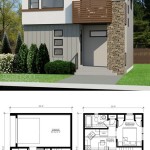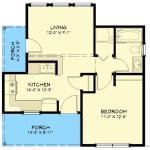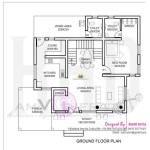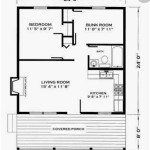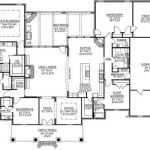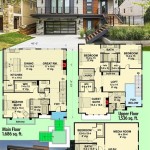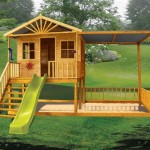House Plans for Small Stone Cottages
Stone cottages evoke a sense of timeless charm and rustic elegance. Their enduring appeal stems from a combination of natural beauty, durability, and a connection to traditional architectural styles. For those seeking a smaller footprint with a significant aesthetic impact, small stone cottages offer a compelling option. Careful planning and consideration of various design elements are crucial to maximizing space and functionality within these charming dwellings.
One of the primary advantages of stone construction is its inherent thermal mass. Stone walls absorb and retain heat, helping to regulate indoor temperatures and reduce energy consumption. This characteristic makes stone cottages naturally cool in the summer and warm in the winter. Furthermore, stone is exceptionally durable and requires minimal maintenance, providing a long-lasting and resilient structure.
When selecting house plans for a small stone cottage, several key factors should be considered. The layout should prioritize efficient use of space, often incorporating open-plan designs to create a sense of spaciousness. Natural light is essential in smaller homes, so strategically placed windows and skylights should be incorporated into the design. Furthermore, the plan should consider the surrounding landscape and how the cottage can be integrated harmoniously into its environment.
Several popular architectural styles lend themselves well to small stone cottages. The classic English cottage style, characterized by steeply pitched roofs, exposed beams, and charming dormer windows, is a popular choice. French country cottages offer another appealing option, often featuring rustic stonework, arched doorways, and wrought iron accents. Mediterranean-inspired stone cottages, with their stucco walls, terracotta roofs, and courtyards, are also gaining popularity in warmer climates.
The choice of stone significantly impacts the cottage's aesthetic and overall cost. Locally sourced stone is often the most economical and environmentally friendly option. Fieldstone, with its irregular shapes and textures, creates a rustic and natural appearance. Cut stone, such as limestone or granite, offers a more refined and formal aesthetic. The use of reclaimed stone can add character and sustainability to the project.
The interior layout of a small stone cottage requires careful consideration. Open-plan living areas, combining the kitchen, dining, and living spaces, can maximize the sense of space and flow. Built-in storage solutions, such as window seats with storage compartments and under-stair shelving, can help to keep clutter at bay. Multi-functional furniture, such as sofa beds and extendable dining tables, can further enhance the functionality of smaller spaces.
Incorporating outdoor living spaces is an excellent way to extend the usable area of a small stone cottage. Patios, courtyards, and decks can create inviting spaces for dining, relaxation, and entertaining. These outdoor areas can be seamlessly integrated with the interior through the use of large windows and French doors, blurring the lines between indoor and outdoor living.
Sustainable design principles are increasingly important in modern construction. Small stone cottages offer an inherent advantage in terms of thermal mass and durability. Further enhancements can be achieved through the incorporation of energy-efficient windows, insulation, and appliances. Utilizing renewable energy sources, such as solar panels and geothermal heating, can further reduce the environmental impact.
Landscaping plays a vital role in enhancing the beauty and functionality of a small stone cottage. Native plants and drought-tolerant landscaping can minimize maintenance and conserve water. Stone pathways, retaining walls, and terraces can create attractive and functional outdoor spaces. Integrating the cottage into the surrounding landscape through careful planting and design can create a harmonious and inviting environment.
Consulting with an experienced architect and builder is essential throughout the design and construction process. They can provide valuable insights into site selection, material choices, and construction techniques. A thorough understanding of local building codes and regulations is crucial to ensure compliance and avoid potential problems. Careful planning and collaboration with professionals will ensure the successful realization of a beautiful and functional small stone cottage.
Budgeting accurately is essential when planning a small stone cottage project. The cost of stone construction can vary significantly depending on the type of stone used, the complexity of the design, and local labor costs. Developing a realistic budget and sticking to it throughout the project will help to avoid cost overruns and ensure the project's successful completion.
Finally, the design of a small stone cottage should reflect the individual needs and preferences of the homeowner. Whether seeking a cozy retreat, a family home, or a vacation getaway, careful consideration of lifestyle, aesthetics, and functionality will result in a personalized and cherished dwelling that stands the test of time.

Standout Stone Cottage Plans Compact To Capacious Design Plan House

Standout Stone Cottage Plans Compact To Capacious

Stone Cottage House Plan 80336pm Architectural Designs Plans

Stone Mountain Cabin Plans Tiny House Blog Sims

Standout Stone Cottage Plans Compact To Capacious

Small Stone Cottage House Plan Chp Sg 1576 Aa Sq Ft Affordable Home Under 1600 Square Feet

Tudor Style House Plan 1 Beds Baths 300 Sq Ft 48 641 Houseplans Com

Stone Mountain Cabin Plans Tiny House Blog

Small Stone Cottages Truly Timeless

Small Cottage Design House Plan With Loft

